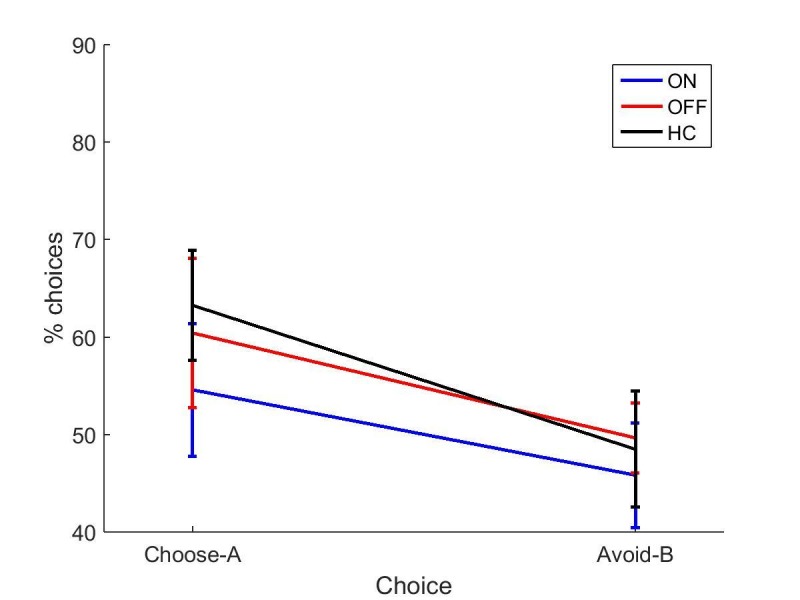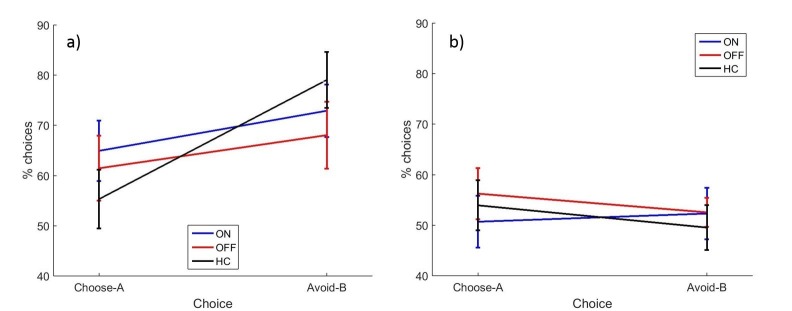Figure 4. The mean percentages of selections on the novel pairs test for a) experiment 2 and b) experiment 3.
There were no significant effects of disease state or medication condition on either selection in either experiment 2 (p>0.2) or experiment 3 (p>0.3). Error bars are SEM. Figure 4—figure supplement 1 shows the data after filtering was applied to experiment 2, and Figure 4—figure supplement 2 shows the filtered data for experiment 3. Figure 4—source data 1 shows the summary statistics.
DOI: http://dx.doi.org/10.7554/eLife.26801.012
Figure 4—figure supplement 1. The mean percentage of selections for the filtered data for experiment 2.

Figure 4—figure supplement 2. The mean percentage of selections for the filtered data for experiment 3.


